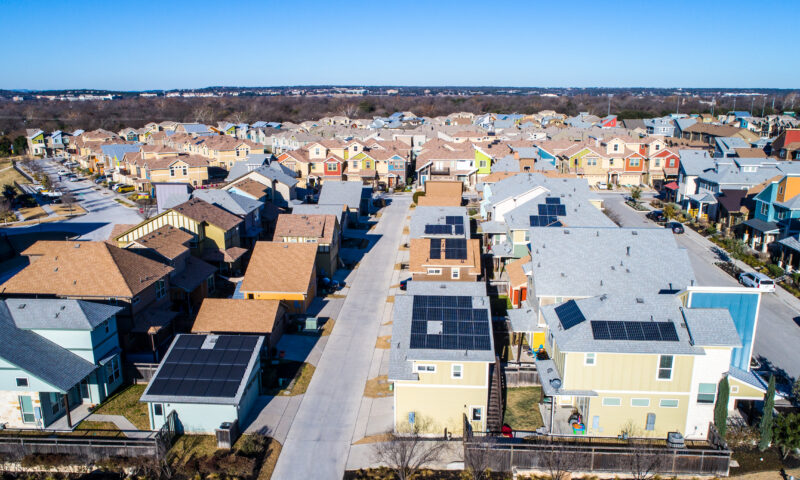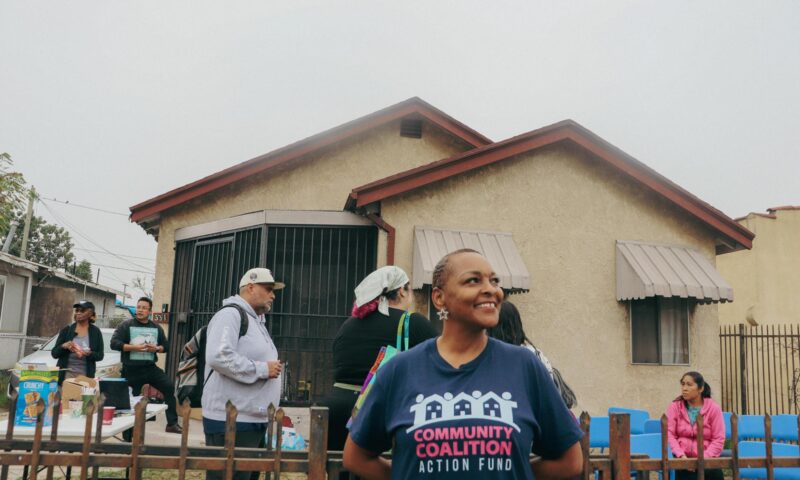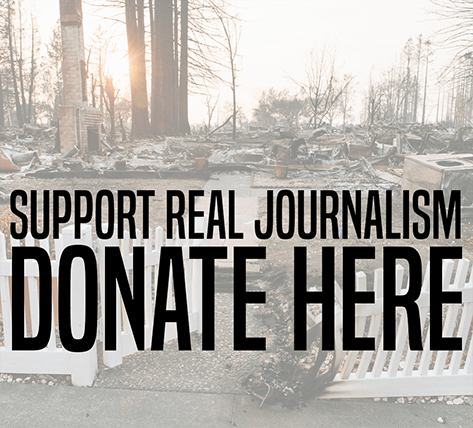The Slick
Showdown in Colorado: Whether to Drill Under Homes, Schools and the Water Supply
A plan for drilling 156 oil and gas wells near a Superfund site has driven suburban residents to action.

Unique Colorado environmental rules are being put to the test as residents who live near one of the nation’s most polluted industrial sites in suburban Denver are fighting a proposal to drill for oil and gas under a reservoir that stores their drinking water.
An attorney hired by homeowners has filed a motion with state regulators asking that residents receive as much time during hearings in front of state regulators to rebut the 156-well plan as the operator, Civitas Resources Inc., is given to show it merits approval. The Energy & Carbon Management Commission will consider whether to grant that request at a July 30 hearing.
The action marks the first time residents here have retained legal counsel to advocate their position against such a large-scale drilling proposal. This month’s hearing is the culmination of a heated 21-month debate over Civitas’ proposed Lowry Ranch oil and gas comprehensive area plan. What’s known as the “CAP” process is designed to prioritize citizens’ health and safety over fossil fuel development.
Hundreds of members of Save the Aurora Reservoir want to “effectively as possible make their case in front of commissioners” that they should reject the drilling plan, said Mike Foote, the group’s attorney and a former state legislator who helped draft a 2019 law that required the commission to strengthen its oil and gas rules.
Federal regulators have expressed concern that drilling could imperil the effort to prevent carcinogenic chemicals stored on the Lowry Landfill Superfund Site from leaking into groundwater.
In a response filed with regulators on June 24, Crestone Peak Resources Operating LLC, a Civitas subsidiary, wrote that the community group’s equal-time argument is flawed because none of its members live within the required distance of the proposed well pads. Since the six-member commission started implementing new rules in 2021 to focus on public health and the environment in oil and gas hearings, it has approved three such comprehensive area plans, which call for hundreds of wells north and east of Denver. The Lowry Ranch proposal, which would span 50 square miles, is perhaps the most controversial yet, with horizontal pipes extending miles underground, including beneath homes and schools in Aurora, the state’s third most populous city.
The tension between suburban residents in communities stretching out from the eastern foothills of the Rocky Mountains and the fossil fuel industry, a major economic driver in the state, has escalated in the last decade as hydraulic fracturing, or fracking, unlocked vast energy reserves miles below the Earth’s surface.
The process — in which water, sand and chemicals are injected at high pressure into shale miles below the surface, causing fissures and releasing oil and gas — allowed industrial operations to move into cities and prompted municipalities to enact moratoriums or bans on such development. Courts threw these out, increasing pressure on state legislators to pass the 2019 law changing regulators’ focus from encouraging fossil fuel extraction to ensuring public health.
Even with protections under the new law, balancing the rights of mineral owners to profit from fossil fuel deposits and residents’ concerns about the health impacts of such activities has proven complicated. The energy commission denied a request by Civitas to drill new wells on an existing pad near neighborhoods northwest of Denver in January. In response, the operator sued in district court, saying the agency violated its own rules and the state constitution when it rejected its application to permit 18 new wells in Weld County. The case remains unsettled.
An hour’s drive south in Arapahoe County, the stakes are even higher for neighborhoods near the proposed Lowry Ranch project. Federal regulators have expressed concern on multiple occasions that drilling could imperil a decades-long, multimillion-dollar effort to prevent carcinogenic chemicals stored on the Lowry Landfill Superfund Site from leaking into the groundwater. Civitas assured the U.S. Environmental Protection Agency that it will not drill under the site and that its activities would not disturb the bedrock cradling millions of gallons of toxic waste in 78 unlined trenches.
The operator’s commitment, accepted by the EPA, did not mollify homeowners. With the help of the advocacy group Environmental Integrity Project, they retained a geologist, an acoustics engineer and a toxics and remediation specialist to urge state regulators to return the Lowry Ranch drilling proposal to Civitas for further scientific study.
The nine-county Denver metropolitan area has repeatedly failed to meet federal air quality standards for ozone.
Experts’ comments, filed with the commission in May, argue that regulators must require the operator to determine if fracking risks triggering earthquakes in nearby faults that could damage homes, the Aurora Reservoir’s dam and containment efforts at the Superfund site.
These “hazard assessments” should include “adequate geological and geophysical studies at each well pad and along each proposed horizontal well bore and for at least one mile beyond to demonstrate there are no known faults that could extend into the shale fracture zone and upward into regional aquifers,” Brian O’Mara, a geological engineer and hydrogeologist, wrote to regulators.
He added that these concerns are magnified because the “horizontal well bores will extend under 10 square miles of residential neighborhoods with hundreds of homes and at least 10 schools.”
The energy commission does not require operators to conduct such studies before they submit development proposals to state regulators, Megan Castle, an energy commission spokesperson, said in an email. After a February Capital & Main story revealed federal and state regulators’ concerns about the project’s possible interference with containment activities on the Superfund site, Civitas sought to reassure the community its project would be safe. In an April 11 online informational meeting, Dan Harrington, Civitas’ asset development manager, said, “This is really important to note that there is no evidence of earthquakes triggered by oil well drilling completions and production anywhere in the [Denver-Julesburg] basin.”
Residents in dense neighborhoods around the Aurora Reservoir organized to oppose the Lowry Ranch proposal after Civitas introduced it in October 2022. Since then, homeowners have spent thousands of hours knocking on doors, writing letters to state and federal regulators and lawmakers, testifying at public hearings and researching voluminous studies of the region’s geology and groundwater system and air quality.
The community’s efforts persuaded the energy commission to hold its first-ever local public hearing on May 16 at a fairground near where the well pads would be built. More than 50 people spoke against the plan. No one spoke in favor of it.
“I searched everywhere and asthma wasn’t mentioned once … That’s among the parade of horribles and they didn’t talk about any of it in their application.”
~ Conrad Huygen, Aurora resident
Many of the estimated 250 in attendance expressed concern that toxic pollutants released during oil and gas exploration will exacerbate their families’ existing breathing problems. The nine-county Denver metropolitan area has repeatedly failed to meet federal air quality standards for ozone, which scientists have said causes health issues including higher incidences of asthma.
In an appendix that Civitas submitted to state regulators in June to supplement its drilling proposal, air monitoring consultants found that the wells would present “no adverse health risks” to nearby communities. Conrad Huygen, a retired Air Force judge advocate and adjunct professor of law, who lives near the proposed project, dismissed Civitas’ statement as “a conclusion straight out of the big tobacco playbook.”
He added: “I searched everywhere and asthma wasn’t mentioned once … That’s among the parade of horribles and they didn’t talk about any of it in their application.”
In its June 24 filing with the commission, Civitas said that it has moved its well pad locations farther away from neighborhoods and the reservoir at the request of residents, and that it will erect sound walls and reduce lighting to shield industrial activities.
Save the Aurora Reservoir is also testing the limits of new oil and gas rules adopted by Arapahoe County Commissioners that were prompted by Civitas’ Lowry Ranch proposal. The five-member body voted 3 to 2 in November to increase setbacks between wells and reservoirs and occupied structures to 3,000 feet — greater than a 2,000-foot setback required by state rules — and to require operators to file water quality plans and do routine on-site air quality and noise testing.
The new regulations are allowed under the 2019 state law, which provided municipalities the power to regulate surface activities of oil and gas companies. The state oversees underground drilling operations.
Arapahoe County’s public information officer told Capital & Main in February that the commissioners would discuss the potential for earthquakes and other issues as they develop regulations. Even so, the county, in an action that runs parallel to the state process, is currently considering four well pad applications filed by Civitas as part of its Lowry Ranch proposal. County administrators planned to consider these requests administratively, without a public hearing, according to the agency’s oil and gas website.
On June 5, residents delivered a petition signed by more than 630 Coloradans demanding that the county commission hold public hearings on Civitas’ Lowry Ranch well pad requests. The county has yet to respond to the request. Its representative didn’t return email and phone requests from Capital & Main asking if it would hold public hearings.
In the meantime, members of Save the Aurora Reservoir redoubled efforts to raise tens of thousands of dollars to pay legal costs in their continued fight against the 156-well Lowry Ranch proposal.
“Every time we ask [regulators] a question we are continuously told ‘no one has done this before,’” said Marsha Goldsmith Kamin, the group’s president. “It’s costing us a lot of money.”
Copyright 2024 Capital & Main

-

 The SlickNovember 14, 2025
The SlickNovember 14, 2025Can an Imperiled Frog Stop Oil Drilling Near Denver Suburbs? Residents Hope So.
-

 Latest NewsNovember 11, 2025
Latest NewsNovember 11, 2025Photos, Video, Protests — Homeland Security Tightens Rule on Anti-ICE Activities
-

 The SlickNovember 12, 2025
The SlickNovember 12, 2025Known for Its Oil, Texas Became a Renewable Energy Leader. Now It’s Being Unplugged.
-

 Column - State of InequalityNovember 13, 2025
Column - State of InequalityNovember 13, 2025Barring a Sharp Shift, Health Insurance Costs Will Skyrocket
-

 Latest NewsNovember 19, 2025
Latest NewsNovember 19, 2025How Employers and Labor Groups Are Trying to Protect Workers From ICE
-

 Latest NewsNovember 18, 2025
Latest NewsNovember 18, 2025Future of Special Education at Risk, Teachers Say, as Trump Moves to Cut Staff and Programs
-

 Latest NewsNovember 17, 2025
Latest NewsNovember 17, 2025In South L.A., Black and Latino Neighbors Unite Against ICE as Systems Fail
-

 The SlickNovember 18, 2025
The SlickNovember 18, 2025After Years of Sparring, Gov. Shapiro Abandons Pennsylvania’s Landmark Climate Initiative

